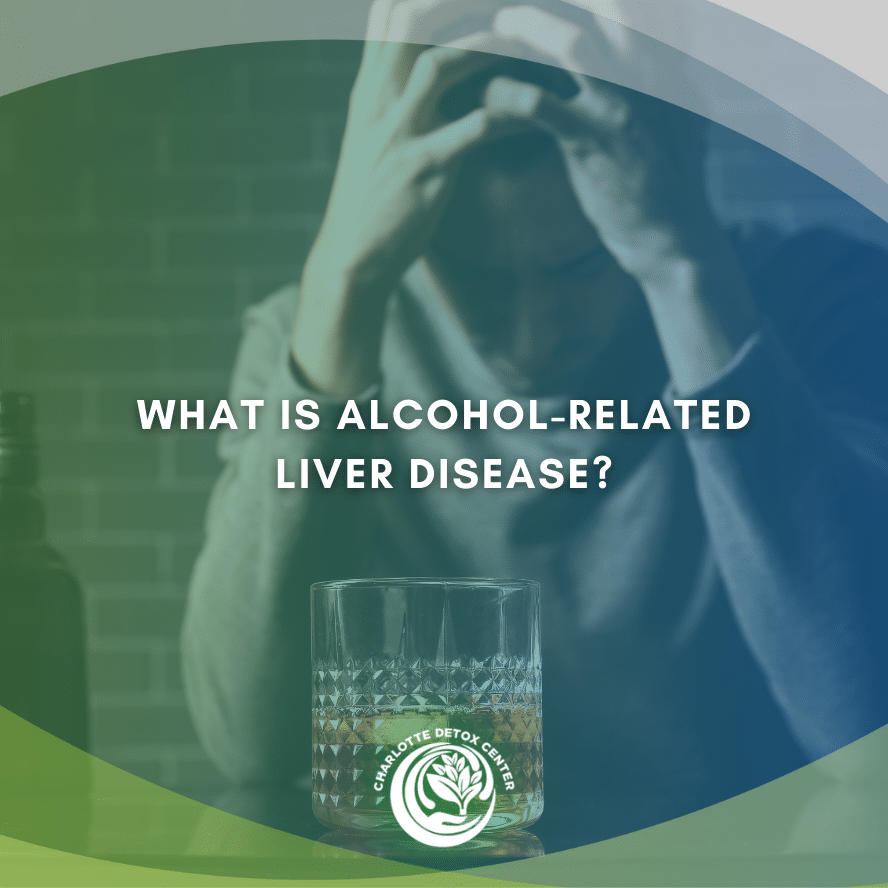What is Alcohol-Related Liver Disease?

Medically Verified: 2/1/24
Medical Reviewer
Chief Editor

All of the information on this page has been reviewed and verified by a certified addiction professional.
Long periods of heavy alcohol use can take a toll on your mental, physical, and social health. Excessive alcohol use can cause a range of short and long-term effects that can impair your ability to function and lead to serious, sometimes life-threatening, permanent consequences.
Alcohol-related liver disease (ARLD) is one possible consequence of heavy, prolonged alcohol abuse. Alcohol-related liver disease can cause liver damage after years of heavy drinking, resulting in severe swelling and inflammation or scarring.
Research suggests that nearly 1 in 10 people in the United States drink heavily and that 10 to 15% of those who drink heavily will develop ARLD. Liver damage and disease can be life-threatening, and there is no cure.
This article will explore how to identify heavy drinking, how alcohol-related liver disease develops, and how to prevent it. Reach out to the specialists at Charlotte North Carolina Detox to learn about our supportive alcohol abuse treatment programs or to get support during any stage of your recovery journey.
Recognizing Heavy Drinking
Alcohol use is generally legal and common among adults in the United States, with the majority of adults reporting that they drink at least occasionally. Because drinking is so widely accepted and common in our culture, it can sometimes be challenging to determine when you’ve crossed the line into heavy drinking.
According to the Centers for Disease Control and Prevention, people who choose to consume alcohol should do so in moderation. Moderate drinking is defined as:
- For men, two or fewer alcoholic drinks per day
- For women, one or fewer alcoholic beverages per day
Heavy drinking means exceeding these limits regularly. For men, heavy drinking means consuming fifteen or more alcoholic drinks in a week. For women, heavy drinking is defined as having eight or more alcoholic beverages in a week.
It’s important to understand what “a drink” means. It does not imply any alcoholic beverage. A “drink” is defined as:
- 12 ounces of beer
- 5 ounces of wine
- 1.5 ounces of distilled spirits
- 8 ounces of malt liquor
A standard pint of beer contains more than one serving of alcohol, as would a large glass of wine served in a bar or restaurant. It’s important to pay attention to the actual amount of alcohol you’re consuming so that you can recognize when you’re exceeding the limits.
What are the Stages of Alcohol-Related Liver Disease?
Alcohol-related liver disease is a progressive condition that occurs in three stages.
1. Alcoholic fatty liver disease
In the first stage of ARLD, fat accumulates around the liver. If a person stops drinking at this stage, the liver will heal itself.
2. Acute alcoholic hepatitis
Prolonged alcohol abuse causes inflammation and swelling in the liver. Some people can improve with treatment if this condition is identified before the damage is too severe. However, severe damage may be irreversible and can lead to liver failure.
3. Alcoholic cirrhosis
The final stage of ARLD is the most severe, resulting in irreversible scarring on the liver. Alcoholic cirrhosis often leads to liver failure.
Symptoms of Alcohol-Related Liver Disease
Some people with ARLD do not exhibit symptoms until the disease is advanced, and some show signs before the damage is severe.
Common symptoms of ARLD include:
- Loss of appetite
- Nausea
- Jaundice
- Fatigue
- Abdominal discomfort
- Increased thirst
- Swelling in the legs and abdomen
- Weight loss
- Changes in skin color–lighter or darker
- Redness on the hands or feet
- Dark-colored bowel movements
- Agitation
- Fainting
- Mood swings
- Confusion
- Bleeding gums
- Enlarged breast tissue in men
Some of the symptoms of ARLD are more likely to develop after binge drinking.
If you or someone in your life exhibits signs of ARLD, consult a medical professional as soon as possible.
Risk Factors and Treatment for ARLD
Anyone who drinks excessively for a prolonged period can develop alcohol-related liver disease. Certain risk factors make it more likely that you will have ARLD, including:
- A family history of alcohol-related liver disease
- Binge drinking
- Heavy drinking
- Poor nutrition
If you believe you may have alcohol-related liver disease, consult your doctor. They will perform an evaluation to determine the cause of your ARLD symptoms and recommend a course of treatment. The evaluation may include:
- Liver function testing
- Complete blood count
- Abdominal computed tomography (CT) scan
- Liver biopsy
Treatment for ARLD includes:
- Alcohol abuse treatment programs
- Multivitamins
- Liver transplant
It is critical to stop drinking if you develop ARLD. If you identify alcohol-related liver disease in the early stages, your liver may be able to heal itself once you stop drinking.
People with alcohol addiction often struggle to stop drinking on their own. They may require a comprehensive detox and treatment program to address the physical, emotional, and behavioral aspects of their alcohol abuse.
Find an Alcohol Detox Now
If you or someone in your life struggles with heavy drinking and you need help to stop, you are not alone. Reach out to the specialists at the Charlotte North Carolina Detox now to learn about our effective medically supported alcohol detox programs or for help at any stage of your recovery journey.
